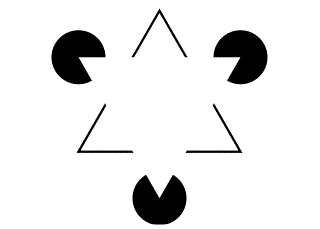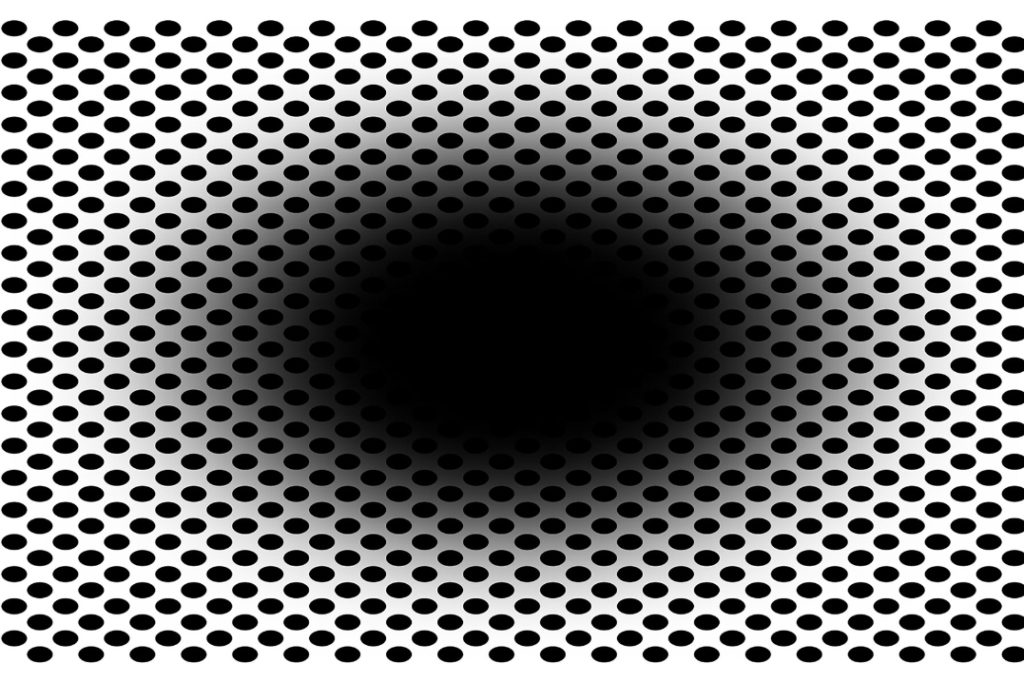
Some of the cognitive principles we use in persuasive content depend on one profound fact. Human perception is, fundamentally, a collection of illusions.
Look at the center of the large polka-dot image. I’ll tell you up front that the effect is not animated. It is an exquisite optical illusion. I’ll explain why in a moment.

We’re capable of perceiving, with our own senses, a “reality” that doesn’t exist. It’s not just in visual illusions like this tunnel. It’s illusions of time, space, emotion and importance. Illusions about our own ability to predict outcomes. Even the illusion of control over our powers of perception. (Remember “the dress?”)
We take decision-making shortcuts all the time. We can’t possibly process or remember every fact and detail, so we discard specifics and form generalities. As our minds substitute these generalities for complete information, we enter a world of illusion. We make subtle, subconscious decisions about where to focus our attention, what’s important enough to remember, and whom to trust, based on perceptions that we consider real. We couldn’t get through the day without them.
Of the hundreds of common mental shortcuts, a surprising number are based on illusions. Those shortcuts are the basis of new thinking in B2B marketing that incorporates behavioral economics, or how people make decisions about money.
Our buyer audiences are subject to these illusions, which can lead to good decisions, bad decisions, or no decision at all. Should they open your email, contact your rep, keep you on the shortlist?
And we as marketers also are subject to illusions that we accept as reality. Marketers believe we know our target audience’s personas, the problems they face and the value of our technology solutions.
Time after time, your competitors throw campaigns at the wall and hope something sticks, trying to outdo each other with the same set of tools. But they’re throwing budget into an ever-deepening hole.
Behavioral science offers a light at the end of the tunnel. It offers new tools to help your prospects arrive at the right decisions. If your software is right for them, then it would be a mistake to choose any other vendor. Don’t let your best prospects make that mistake. If you understand their illusions, you can work with their perceptions, rather than fighting them. You’ll be perceived as a partner, not just a bidder.
About the graphic: Here’s the Frontiers in Human Neuroscience explanation of why you see this visual effect…
Psychologists tested the static image above on participants, and found that the perception that the oval in the center darkened was enough to make most subjects’ pupils dilate to capture more light. The researchers hypothesize that the illusion works because the gradient on the oval makes it feel as though the viewer is entering a dark hole or tunnel.
In other words, the brain expects things to get darker in the “tunnel” and adjusts the eyes in anticipation. Involuntary physical response to an illusion. This misperception of movement through space is also present in other trick images. They demonstrate that perception — possibly all perception – is, essentially, an illusion.